discussed in isolation.
8 PREFACE
Learning Objectives
Every module begins with a set of learning objectives. These objectives are designed to guide the instructor in deciding what content to include or
assign, and to guide the student with respect to what he or she can expect to learn. After completing the module and end-of-module exercises,
students should be able to demonstrate mastery of the learning objectives.
Call-Outs
Key definitions, concepts, and equations are called out with a special design treatment. Call-outs are designed to catch readers’ attention, to make it
clear that a specific term, concept, or equation is particularly important, and to provide easy reference for a student reviewing content.
Key Terms
Key terms are in bold and are followed by a definition in context. Definitions of key terms are also listed in the Glossary, which appears at the end of
the module.
Worked Examples
Worked examples have four distinct parts to promote both analytical and conceptual skills. Worked examples are introduced in words, always using
some application that should be of interest. This is followed by a Strategy section that emphasizes the concepts involved and how solving the
problem relates to those concepts. This is followed by the mathematical Solution and Discussion.
Many worked examples contain multiple-part problems to help the students learn how to approach normal situations, in which problems tend to have
multiple parts. Finally, worked examples employ the techniques of the problem-solving strategies so that students can see how those strategies
succeed in practice as well as in theory.
Problem-Solving Strategies
Problem solving strategies are first presented in a special section and subsequently appear at crucial points in the text where students can benefit
most from them. Problem-solving strategies have a logical structure that is reinforced in the worked examples and supported in certain places by line
drawings that illustrate various steps.
Misconception Alerts
Students come to physics with preconceptions from everyday experiences and from previous courses. Some of these preconceptions are
misconceptions, and many are very common among students and the general public. Some are inadvertently picked up through misunderstandings
of lectures and texts. The Misconception Alerts feature is designed to point these out and correct them explicitly.
Take-Home Investigations
Take Home Investigations provide the opportunity for students to apply or explore what they have learned with a hands-on activity.
Things Great and Small
In these special topic essays, macroscopic phenomena (such as air pressure) are explained with submicroscopic phenomena (such as atoms
bouncing off walls). These essays support the modern perspective by describing aspects of modern physics before they are formally treated in later
chapters. Connections are also made between apparently disparate phenomena.
Simulations
Where applicable, students are directed to the interactive PHeT physics simulations developed by the University of Colorado
(http://phet.colorado.edu (http://phet.colorado.edu) ). There they can further explore the physics concepts they have learned about in the module.
Summary
Module summaries are thorough and functional and present all important definitions and equations. Students are able to find the definitions of all
terms and symbols as well as their physical relationships. The structure of the summary makes plain the fundamental principles of the module or
collection and serves as a useful study guide.
Glossary
At the end of every module or chapter is a glossary containing definitions of all of the key terms in the module or chapter.
End-of-Module Problems
At the end of every chapter is a set of Conceptual Questions and/or skills-based Problems & Exercises. Conceptual Questions challenge students’
ability to explain what they have learned conceptually, independent of the mathematical details. Problems & Exercises challenge students to apply
both concepts and skills to solve mathematical physics problems. Online, every other problem includes an answer that students can reveal
immediately by clicking on a “Show Solution” button. Fully worked solutions to select problems are available in the Student Solutions Manual and the
Teacher Solutions Manual.
In addition to traditional skills-based problems, there are three special types of end-of-module problems: Integrated Concept Problems, Unreasonable
Results Problems, and Construct Your Own Problems. All of these problems are indicated with a subtitle preceding the problem.
Integrated Concept Problems
In Unreasonable Results Problems, students are challenged not only to apply concepts and skills to solve a problem, but also to analyze the answer
with respect to how likely or realistic it really is. These problems contain a premise that produces an unreasonable answer and are designed to further
emphasize that properly applied physics must describe nature accurately and is not simply the process of solving equations.
PREFACE 9
Unreasonable Results
In Unreasonable Results Problems, students are challenged to not only apply concepts and skills to solve a problem, but also to analyze the answer
with respect to how likely or realistic it really is. These problems contain a premise that produces an unreasonable answer and are designed to further
emphasize that properly applied physics must describe nature accurately and is not simply the process of solving equations.
Construct Your Own Problem
These problems require students to construct the details of a problem, justify their starting assumptions, show specific steps in the problem’s solution,
and finally discuss the meaning of the result. These types of problems relate well to both conceptual and analytical aspects of physics, emphasizing
that physics must describe nature. Often they involve an integration of topics from more than one chapter. Unlike other problems, solutions are not
provided since there is no single correct answer. Instructors should feel free to direct students regarding the level and scope of their considerations.
Whether the problem is solved and described correctly will depend on initial assumptions.
Appendices
Appendix A: Atomic Masses
Appendix B: Selected Radioactive Isotopes
Appendix C: Useful Information
Appendix D: Glossary of Key Symbols and Notation
Acknowledgements
This text is based on the work completed by Dr. Paul Peter Urone in collaboration with Roger Hinrichs, Kim Dirks, and Manjula Sharma. We would
like to thank the authors as well as the numerous professors (a partial list follows) who have contributed their time and energy to review and provide
feedback on the manuscript. Their input has been critical in maintaining the pedagogical integrity and accuracy of the text.
Senior Contributing Authors
Dr. Paul Peter Urone
Dr. Roger Hinrichs, State University of New York, College at Oswego
Contributing Authors
Kim Dirks, University of Auckland, New Zealand
Dr. Manjula Sharma, University of Sydney, Australia
Expert Reviewers
Erik Christensen, P.E, South Florida Community College
Dr. Eric Kincanon, Gonzaga University
Dr. Douglas Ingram, Texas Christian University
Lee H. LaRue, Paris Junior College
Dr. Marc Sher, College of William and Mary
Dr. Ulrich Zurcher, Cleveland State University
Dr. Matthew Adams, Crafton Hills College, San Bernardino Community College District
Dr. Chuck Pearson, Virginia Intermont College
Our Partners
WebAssign
Webassign is an independent online homework and assessment system that has been available commercially since 1998. WebAssign has recently
begun to support the Open Education Resource community by creating a high quality online homework solution for selected open-source textbooks,
available at an affordable price to students. These question collections include randomized values and variables, immediate feedback, links to the
open-source textbook, and a variety of text-specific resources and tools; as well as the same level of rigorous coding and accuracy-checking as any
commercially available online homework solution supporting traditionally available textbooks.
Sapling Learning
Sapling Learning provides the most effective interactive homework and instruction that improve student learning outcomes for the problem-solving
disciplines. They offer an enjoyable teaching and effective learning experience that is distinctive in three important ways:
• Ease of Use: Sapling Learning’s easy to use interface keeps students engaged in problem-solving, not struggling with the software.
• Targeted Instructional Content: Sapling Learning increases student engagement and comprehension by delivering immediate feedback and
targeted instructional content.
• Unsurpassed Service and Support: Sapling Learning makes teaching more enjoyable by providing a dedicated Masters or PhD level colleague
to service instructors’ unique needs throughout the course, including content customization.
10 PREFACE

CHAPTER 1 | INTRODUCTION: THE NATURE OF SCIENCE AND PHYSICS 11
1
INTRODUCTION: THE NATURE OF SCIENCE AND
PHYSICS
Figure 1.1 Galaxies are as immense as atoms are small. Yet the same laws of physics describe both, and all the rest of nature—an indication of the underlying unity in the
universe. The laws of physics are surprisingly few in number, implying an underlying simplicity to nature’s apparent complexity. (credit: NASA, JPL-Caltech, P. Barmby,
Harvard-Smithsonian Center for Astrophysics)
Learning Objectives
1.1. Physics: An Introduction
• Explain the difference between a principle and a law.
• Explain the difference between a model and a theory.
1.2. Physical Quantities and Units
• Perform unit conversions both in the SI and English units.
• Explain the most common prefixes in the SI units and be able to write them in scientific notation.
1.3. Accuracy, Precision, and Significant Figures
• Determine the appropriate number of significant figures in both addition and subtraction, as well as multiplication and division
calculations.
• Calculate the percent uncertainty of a measurement.
1.4. Approximation
• Make reasonable approximations based on given data.
Introduction to Science and the Realm of Physics, Physical Quantities, and Units
What is your first reaction when you hear the word “physics”? Did you imagine working through difficult equations or memorizing formulas that seem
to have no real use in life outside the physics classroom? Many people come to the subject of physics with a bit of fear. But as you begin your
exploration of this broad-ranging subject, you may soon come to realize that physics plays a much larger role in your life than you first thought, no
matter your life goals or career choice.
For example, take a look at the image above. This image is of the Andromeda Galaxy, which contains billions of individual stars, huge clouds of gas,
and dust. Two smaller galaxies are also visible as bright blue spots in the background. At a staggering 2.5 million light years from the Earth, this
galaxy is the nearest one to our own galaxy (which is called the Milky Way). The stars and planets that make up Andromeda might seem to be the
furthest thing from most people’s regular, everyday lives. But Andromeda is a great starting point to think about the forces that hold together the
universe. The forces that cause Andromeda to act as it does are the same forces we contend with here on Earth, whether we are planning to send a
rocket into space or simply raise the walls for a new home. The same gravity that causes the stars of Andromeda to rotate and revolve also causes
water to flow over hydroelectric dams here on Earth. Tonight, take a moment to look up at the stars. The forces out there are the same as the ones
here on Earth. Through a study of physics, you may gain a greater understanding of the interconnectedness of everything we can see and know in
this universe.
Think now about all of the technological devices that you use on a regular basis. Computers, smart phones, GPS systems, MP3 players, and satellite
radio might come to mind. Next, think about the most exciting modern technologies that you have heard about in the news, such as trains that levitate
above tracks, “invisibility cloaks” that bend light around them, and microscopic robots that fight cancer cells in our bodies. All of these groundbreaking
advancements, commonplace or unbelievable, rely on the principles of physics. Aside from playing a significant role in technology, professionals such
as engineers, pilots, physicians, physical therapists, electricians, and computer programmers apply physics concepts in their daily work. For example,
a pilot must understand how wind forces affect a flight path and a physical therapist must understand how the muscles in the body experience forces
as they move and bend. As you will learn in this text, physics principles are propelling new, exciting technologies, and these principles are applied in
a wide range of careers.
In this text, you will begin to explore the history of the formal study of physics, beginning with natural philosophy and the ancient Greeks, and leading
up through a review of Sir Isaac Newton and the laws of physics that bear his name. You will also be introduced to the standards scientists use when
they study physical quantities and the interrelated system of measurements most of the scientific community uses to communicate in a single

12 CHAPTER 1 | INTRODUCTION: THE NATURE OF SCIENCE AND PHYSICS
mathematical language. Finally, you will study the limits of our ability to be accurate and precise, and the reasons scientists go to painstaking lengths
to be as clear as possible regarding their own limitations.
1.1 Physics: An Introduction
Figure 1.2 The flight formations of migratory birds such as Canada geese are governed by the laws of physics. (credit: David Merrett)
The physical universe is enormously complex in its detail. Every day, each of us observes a great variety of objects and phenomena. Over the
centuries, the curiosity of the human race has led us collectively to explore and catalog a tremendous wealth of information. From the flight of birds to
the colors of flowers, from lightning to gravity, from quarks to clusters of galaxies, from the flow of time to the mystery of the creation of the universe,
we have asked questions and assembled huge arrays of facts. In the face of all these details, we have discovered that a surprisingly small and
unified set of physical laws can explain what we observe. As humans, we make generalizations and seek order. We have found that nature is
remarkably cooperative—it exhibits the underlying order and simplicity we so value.
It is the underlying order of nature that makes science in general, and physics in particular, so enjoyable to study. For example, what do a bag of
chips and a car battery have in common? Both contain energy that can be converted to other forms. The law of conservation of energy (which says
that energy can change form but is never lost) ties together such topics as food calories, batteries, heat, light, and watch springs. Understanding this
law makes it easier to learn about the various forms energy takes and how they relate to one another. Apparently unrelated topics are connected
through broadly applicable physical laws, permitting an understanding beyond just the memorization of lists of facts.
The unifying aspect of physical laws and the basic simplicity of nature form the underlying themes of this text. In learning to apply these laws, you will,
of course, study the most important topics in physics. More importantly, you will gain analytical abilities that will enable you to apply these laws far
beyond the scope of what can be included in a single book. These analytical skills will help you to excel academically, and they will also help you to
think critically in any professional career you choose to pursue. This module discusses the realm of physics (to define what physics is), some
applications of physics (to illustrate its relevance to other disciplines), and more precisely what constitutes a physical law (to illuminate the importance
of experimentation to theory).
Science and the Realm of Physics
Science consists of the theories and laws that are the general truths of nature as well as the body of knowledge they encompass. Scientists are
continually trying to expand this body of knowledge and to perfect the expression of the laws that describe it. Physics is concerned with describing
the interactions of energy, matter, space, and time, and it is especially interested in what fundamental mechanisms underlie every phenomenon. The
concern for describing the basic phenomena in nature essentially defines the realm of physics.
Physics aims to describe the function of everything around us, from the movement of tiny charged particles to the motion of people, cars, and
spaceships. In fact, almost everything around you can be described quite accurately by the laws of physics. Consider a smart phone (Figure 1.3).
Physics describes how electricity interacts with the various circuits inside the device. This knowledge helps engineers select the appropriate materials
and circuit layout when building the smart phone. Next, consider a GPS system. Physics describes the relationship between the speed of an object,
the distance over which it travels, and the time it takes to travel that distance. When you use a GPS device in a vehicle, it utilizes these physics
equations to determine the travel time from one location to another.
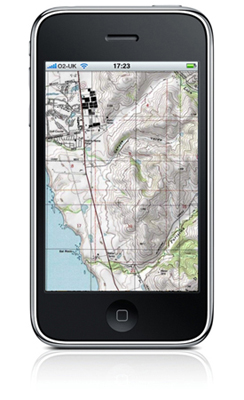

CHAPTER 1 | INTRODUCTION: THE NATURE OF SCIENCE AND PHYSICS 13
Figure 1.3 The Apple “iPhone” is a common smart phone with a GPS function. Physics describes the way that electricity flows through the circuits of this device. Engineers
use their knowledge of physics to construct an iPhone with features that consumers will enjoy. One specific feature of an iPhone is the GPS function. GPS uses physics
equations to determine the driving time between two locations on a map. (credit: @gletham GIS, Social, Mobile Tech Images)
Applications of Physics
You need not be a scientist to use physics. On the contrary, knowledge of physics is useful in everyday situations as well as in nonscientific
professions. It can help you understand how microwave ovens work, why metals should not be put into them, and why they might affect pacemakers.
(See Figure 1.4 and Figure 1.5.) Physics allows you to understand the hazards of radiation and rationally evaluate these hazards more easily.
Physics also explains the reason why a black car radiator helps remove heat in a car engine, and it explains why a white roof helps keep the inside of
a house cool. Similarly, the operation of a car’s ignition system as well as the transmission of electrical signals through our body’s nervous system are
much easier to understand when you think about them in terms of basic physics.
Physics is the foundation of many important disciplines and contributes directly to others. Chemistry, for example—since it deals with the interactions
of atoms and molecules—is rooted in atomic and molecular physics. Most branches of engineering are applied physics. In architecture, physics is at
the heart of structural stability, and is involved in the acoustics, heating, lighting, and cooling of buildings. Parts of geology rely heavily on physics,
such as radioactive dating of rocks, earthquake analysis, and heat transfer in the Earth. Some disciplines, such as biophysics and geophysics, are
hybrids of physics and other disciplines.
Physics has many applications in the biological sciences. On the microscopic level, it helps describe the properties of cell walls and cell membranes
(Figure 1.6 and Figure 1.7). On the macroscopic level, it can explain the heat, work, and power associated with the human body. Physics is involved in medical diagnostics, such as x-rays, magnetic resonance imaging (MRI), and ultrasonic blood flow measurements. Medical therapy sometimes
directly involves physics; for example, cancer radiotherapy uses ionizing radiation. Physics can also explain sensory phenomena, such as how
musical instruments make sound, how the eye detects color, and how lasers can transmit information.
It is not necessary to formally study all applications of physics. What is most useful is knowledge of the basic laws of physics and a skill in the
analytical methods for applying them. The study of physics also can improve your problem-solving skills. Furthermore, physics has retained the most
basic aspects of science, so it is used by all of the sciences, and the study of physics makes other sciences easier to understand.
Figure 1.4 The laws of physics help us understand how common appliances work. For example, the laws of physics can help explain how microwave ovens heat up food, and
they also help us understand why it is dangerous to place metal objects in a microwave oven. (credit: MoneyBlogNewz)
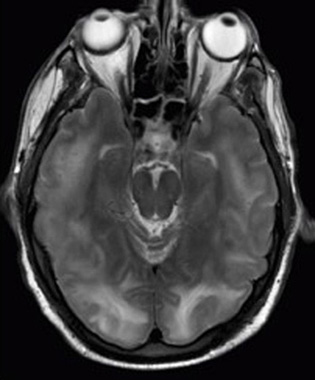

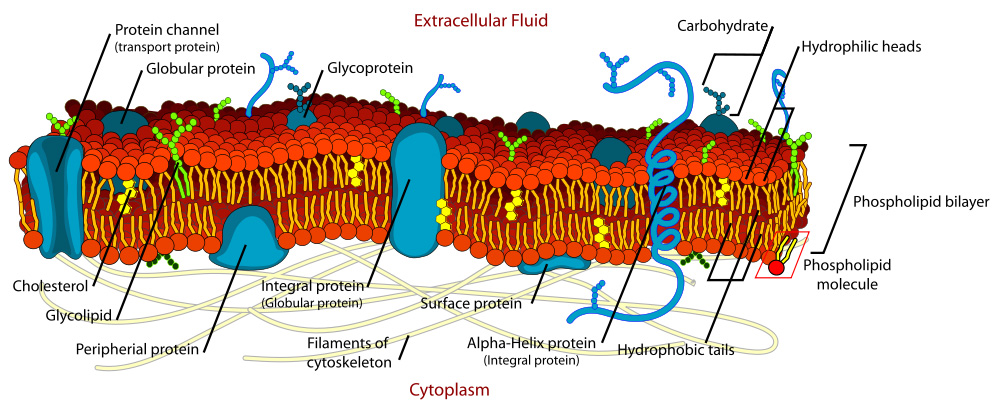
14 CHAPTER 1 | INTRODUCTION: THE NATURE OF SCIENCE AND PHYSICS
Figure 1.5 These two applications of physics have more in common than meets the eye. Microwave ovens use electromagnetic waves to heat food. Magnetic resonance
imaging (MRI) also uses electromagnetic waves to yield an image of the brain, from which the exact location of tumors can be determined. (credit: Rashmi Chawla, Daniel
Smith, and Paul E. Marik)
Figure 1.6 Physics, chemistry, and biology help describe the properties of cell walls in plant cells, such as the onion cells seen here. (credit: Umberto Salvagnin)
Figure 1.7 An artist’s rendition of the the structure of a cell membrane. Membranes form the boundaries of animal cells and are complex in structure and function. Many of the
most fundamental properties of life, such as the firing of nerve cells, are related to membranes. The disciplines of biology, chemistry, and physics all help us understand the
membranes of animal cells. (credit: Mariana Ruiz)
Models, Theories, and Laws; The Role of Experimentation
The laws of nature are concise descriptions of the universe around us; they are human statements of the underlying laws or rules that all natural
processes follow. Such laws are intrinsic to the universe; humans did not create them and so cannot change them. We can only discover and
understand them. Their discovery is a very human endeavor, with all the elements of mystery, imagination, struggle, triumph, and disappointment
inherent in any creative effort. (See Figure 1.8 and Figure 1.9.) The cornerstone of discovering natural laws is observation; science must describe
the universe as it is, not as we may imagine it to be.
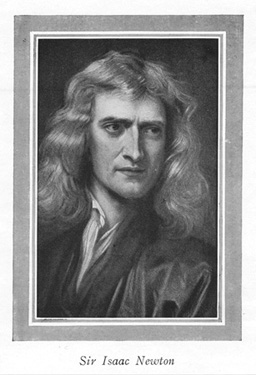
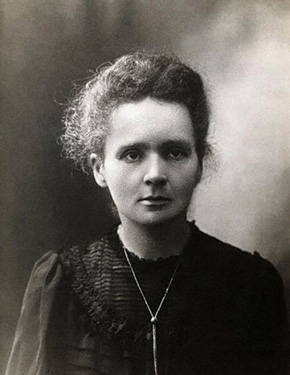
CHAPTER 1 | INTRODUCTION: THE NATURE OF SCIENCE AND PHYSICS 15
Figure 1.8 Isaac Newton (1642–1727) was very reluctant to publish his revolutionary work and had to be convinced to do so. In his later years, he stepped down from his
academic post and became exchequer of the Royal Mint. He took this post seriously, inventing reeding (or creating ridges) on the edge of coins to prevent unscrupulous
people from trimming the silver off of them before using them as currency. (credit: Arthur Shuster and Arthur E. Shipley: Britain’s Heritage of Science. London, 1917.)
Figure 1.9 Marie Curie (1867–1934) sacrificed monetary assets to help finance her early research and damaged her physical well-being with radiation exposure. She is the
only person to win Nobel prizes in both physics and chemistry. One of her daughters also won a Nobel Prize. (credit: Wikimedia Commons)
We all are curious to some extent. We look around, make generalizations, and try to understand what we see—for example, we look up and wonder
whether one type of cloud signals an oncoming storm. As we become serious about exploring nature, we become more organized and formal in
collecting and analyzing data. We attempt greater precision, perform controlled experiments (if we can), and write down ideas about how the data
may be organized and unified. We then formulate models, theories, and laws based on the data we have collected and analyzed to generalize and
communicate the results of these experiments.
A model is a representation of something that is often too difficult (or impossible) to display directly. While a model is justified with experimental proof,
it is only accurate under limited situations. An example is the planetary model of the atom in which electrons are pictur












